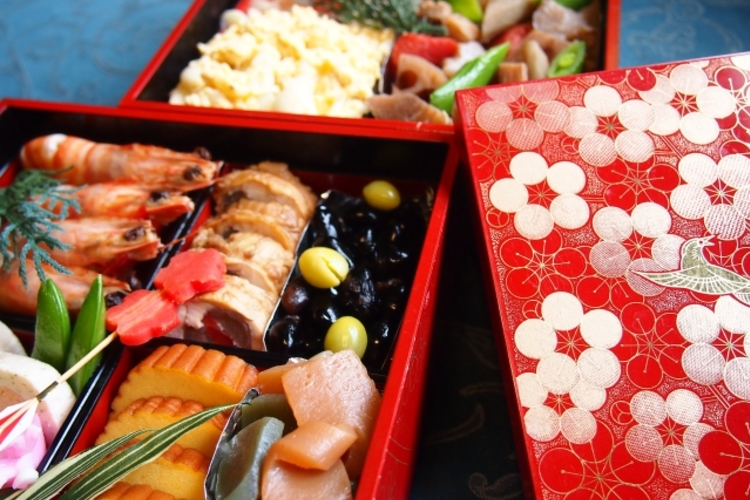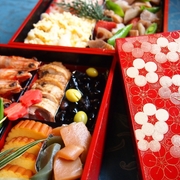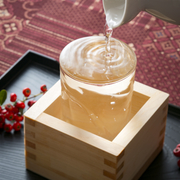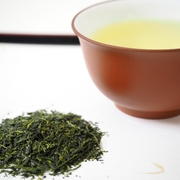Japan is long north to south and has four beautiful seasons with changes and rich nature.
Japanese unique dietary culture originated from each area has grown with geographical featuress and beautiful nature.
Washoku has its origin in Japan.
It includes Sushi, Miso soup, Japanese local dishes.
On the other hand, Japanese cuisine has also developed foreign dishes originally, such as curry, ramen noodles.
Thus, Ministry of Agriculture, Forestry and Fisheries applied for registration of “Washoku: traditional dietary cultures of the Japanese” as UNESCO Intangible Cultural Heritage.
What is the definition of “Washoku” approved as UNESCO Intangible Cultural Heritage?
Definition of Washoku by Ministry of Agriculture, Forestry and Fisheries
Washoku, registered as UNESCO Intangible Cultural Heritage, does not refer to specific dishes like “Sushi” and “Tempura”, nor cooking methods.
The definitions of Washoku, which Ministry of Agriculture, Forestry and Fisheries applied for its registration as UNESCO Intangible Cultural Heritage, set four main qualities.
Four qualities are;
1. Respect a variety of fresh food and its natural flavors
2. Healthy eating habits with excellent balance of nutrition
3. Expression of natural beauty and seasonal changes
4. Close Involvement to traditional events such as the New Year Day season.
Four Qualities of Washoku
Washoku is relatively low-fat and healthy with good balance of nutrition, which has been widely known as traditional Japanese cuisine in the world.
Now, let’s see each quality of Washoku, which Ministry of Agriculture, Forestry and Fisheries defines.
R espect a Variety of Fresh food and its Natural Flavors
The first quality of Washoku is appreciating various ingredients from local areas in Japan and those flavors.
The land of Japan is long north to south, from Hokkaido to Okinawa, with beautiful mountains and seas.
Moreover, each area has grown and harvested local food.
Various cooking methods and tools have been developed to enrich flavors of various food.
For example, in the case of fish as local food in each area, fish as ingredients can be cooked, served or kept in various ways to respect its own flavor, such as serving as Sashimi, grilled, boiled.
H ealthy Eating Habits with Excellent balance of Nutrition
Secondly, Washoku enhances “Umami (taste)” of ingredients (food) to help healthy eating habits with excellent balance of nutrition.
Washoku has preserved the basic rule of “Ichi-ju San-sai (literally, one soup and two side dishes)”.
“Ichi-ju San-sai” means the meal with rice (white rice), soup, and three side dishes like boiled, grilled ones.
Seasonings like miso and dashi stock enrich tastes of food on cooking these three side dishes, which makes dishes healthy and low in calories.
Thus, Japanese traditional dietary culture centered on Washoku has great balance of nutrition and assists healthy eating habits.
In addition, cooking methods to emphasize “Umami (taste)” of food make dishes low in fat, which helps to maintain health, long life, and to prevent obesity.
E xpression of Natural Beauty and Seasonal Changes
Thirdly, Washoku expresses changes of beautiful seasonal nature on serving a dish.
Using vessels and implements, which goes well with each season, amuses you visually on eating.
This is essential side of Washoku.
For example, dishes made with seasonal ingredient on vessels showing its season with seasonal flowers and leaves are presented with decorated interior and implements to appreciate with the sense of its season.
Washoku beautifully served on seasonal vessels with appendages can be enjoyed not only by “taste”, but also by “presentation”.
C lose Involvement to Traditional Events like the New Year Day season
At the fourth, Washoku has developed along with families and local people on the involvement with seasonal events.
Moreover, dishes cooked with blessings of nature have been appreciated and shared with local people, which has also built the strong bond with people living there.
For example, Washoku has close connection to seasonal events such as the New Year Day season, Setsubun, Taue (Rice planting), Sekku (seasonal festival), Ohigan (equinoctial week), New Year Day Eve.
As those examples, for the New Year Day season, rice cake and Osechi dishes, for Setsubun, Eho-maki (rolled sushi), for Sekku for girls, Chirashi-Zushi, for Ohigan, Ohagi, for New Year Day Eve, Toshikoshi-soba noodle.
On each seasonal event, appropriate Washoku is served to appreciate the blessings of nature by sharing “food” together with local people and families to deepen the bond.
At the End
Next time you have Washoku, why don’t you think more about the Japanese culture of Washoku, which has been preserved along with beautiful seasons and nature of Japan, through four qualities?







